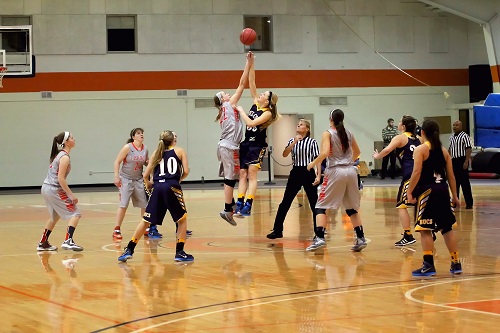

Title IX of the Education Amendments Act of 1972 — the landmark gender equity law that opened the door for female sports programs at the high school and collegiate levels — celebrated its 49th birthday on June 23.
In recent weeks, there has been a flurry of Title IX-related activity.
Clemson University announced it will add women’s lacrosse and women’s gymnastics as varsity programs. Lacrosse competition will begin with the 2022-23 season, followed by gymnastics in 2023-24. According to Clemson’s athletic department, more than 100 schools sponsor NCAA Division I women’s lacrosse programs, and more than 60 compete in Division I women’s gymnastics. The Atlantic Coast Conference, of which Clemson is a member, is renowned for its women’s lacrosse programs and has been represented in the national title match in each of the past nine national tournaments.
“The combination of women’s lacrosse and gymnastics gives us the ability to compete for ACC and NCAA Division I Championships, and we know our community will embrace these new programs,” Dan Radakovich, Clemson’s director of athletics, said in a statement.
Clemson does not offer men’s programs in lacrosse or gymnastics.
Meanwhile, the University of St. Thomas agreed to reinstate women’s tennis, which was previously eliminated at the end of the 2020-21 academic year (along with men’s tennis). At the time, university officials, who are in the midst of transitioning St. Thomas from NCAA Division III to Division I, determined that it was not possible to “adequately provide the conditions necessary to sustain an outstanding student-athlete experience at the Division I level for participants in the tennis programs.”
It didn’t take long for members of the women’s team to threaten a Title IX lawsuit. According to the Star Tribune, “[a]ttorney Arthur Bryant, from the firm Bailey and Glasser in Oakland, Calif., said St. Thomas ‘blatantly violated’ Title IX, the federal law requiring colleges to provide equal opportunities to men and women. He cited 2018-19 data showing that women made up about 47 percent of St. Thomas’ undergraduate population but only 38 percent of their student athletes. Cutting the women’s tennis team would have meant even fewer athletic participation opportunities for female students, he said.”
St. Thomas officials maintain, via a statement, that the university “was compliant with Title IX as a Division III athletics program and will remain compliant as it transitions to Division I. The University recognizes, however, that fighting a Title IX lawsuit would be extremely costly and time-consuming. St. Thomas would rather invest its resources in student initiatives, including the women’s tennis program. Therefore, while the reasons for eliminating the programs remain sound, St. Thomas agreed to reinstate the women’s team. The men’s program will not be reinstated.”
Michigan State in October 2020 announced the end of the men’s and women’s swimming and diving program, citing a variety of reasons that included inadequate facilities, a lack of success in the pool and COVID-19’s long-term financial impact. (Nevertheless, five Spartans competed in Wave I of the U.S. Olympic Swimming Trails in Omaha in June.)
“The decision has been met with opposition from a group called ‘Battle for Michigan State Swimming and Diving,’ as well as legal action in federal court seeking to keep the program in place,” The Detroit News reports.
In May, the U.S. departments of Education and Justice filed an amicus brief, “argu[ing] a previous ruling by the U.S. District Court in the Western District of Michigan erred when Judge Hala Y. Jarbou did not grant the MSU women’s team the preliminary injunction to keep the team, pending the outcome of the case,” the newspaper states. “According to the brief, the District Court did not apply the correct tests to determine whether Michigan State was violating Title IX laws by eliminating the women’s program.”
University officials claim MSU did not violate any Title IX policies.
Another question remains at the center of many critical intercollegiate sports issues: Does Title IX protect transgender students? (The U.S. Department of Education says “yes.”) Why did men’s teams in the NCAA basketball tournament have workout facilities dramatically superior to those of women’s teams? (The NCAA blames “limited space.”)
“Despite the fact that women’s athletics are one of the few avenues for growth for the NCAA, the organization still refuses to give women the credit, and investment, they deserve,” writes Max Wadley inThe Michigan Daily, an independent student-run newspaper at the University of Michigan. “According to an article published by The Washington Post, in the deal surrounding the broadcast rights of two dozen college sports championships, including baseball, softball, hockey and women’s basketball, the women’s basketball tournament is responsible for more than double the figure the NCAA says the tournament is worth. The NCAA states that the women’s tournament, which isn’t allowed to use the term ‘March Madness,’ brings in 15 percent of the revenue from the broadcast deal. The Washington Post says it brings in 33 percent.”
That’s the kind of news that should make tournament host cities sit up straighter and pay closer attention to the potential economic impact of women’s collegiate sports. In fact, the importance resonates all the way down to the high school level, with NFHS just announcing a new educational program on Title IX.

